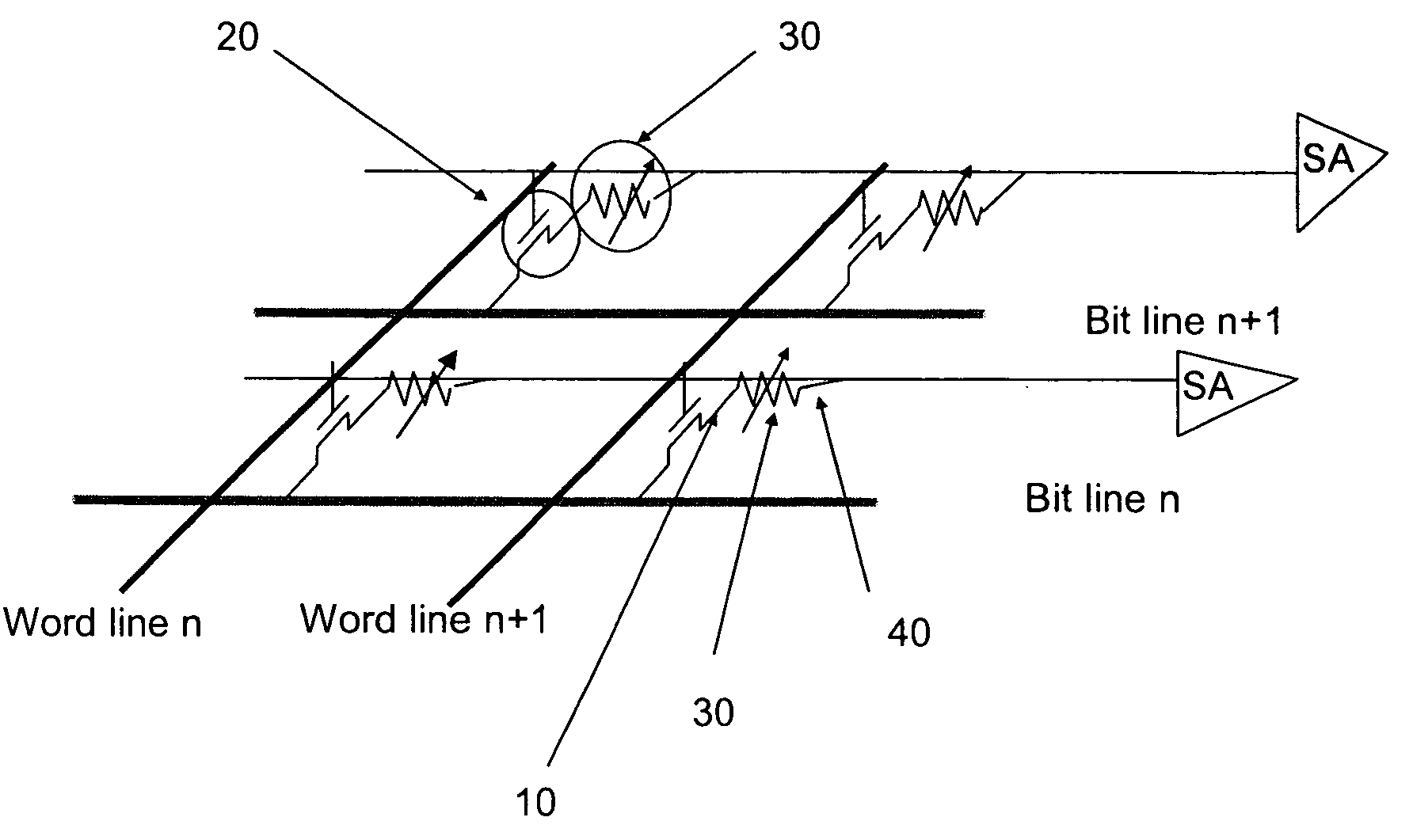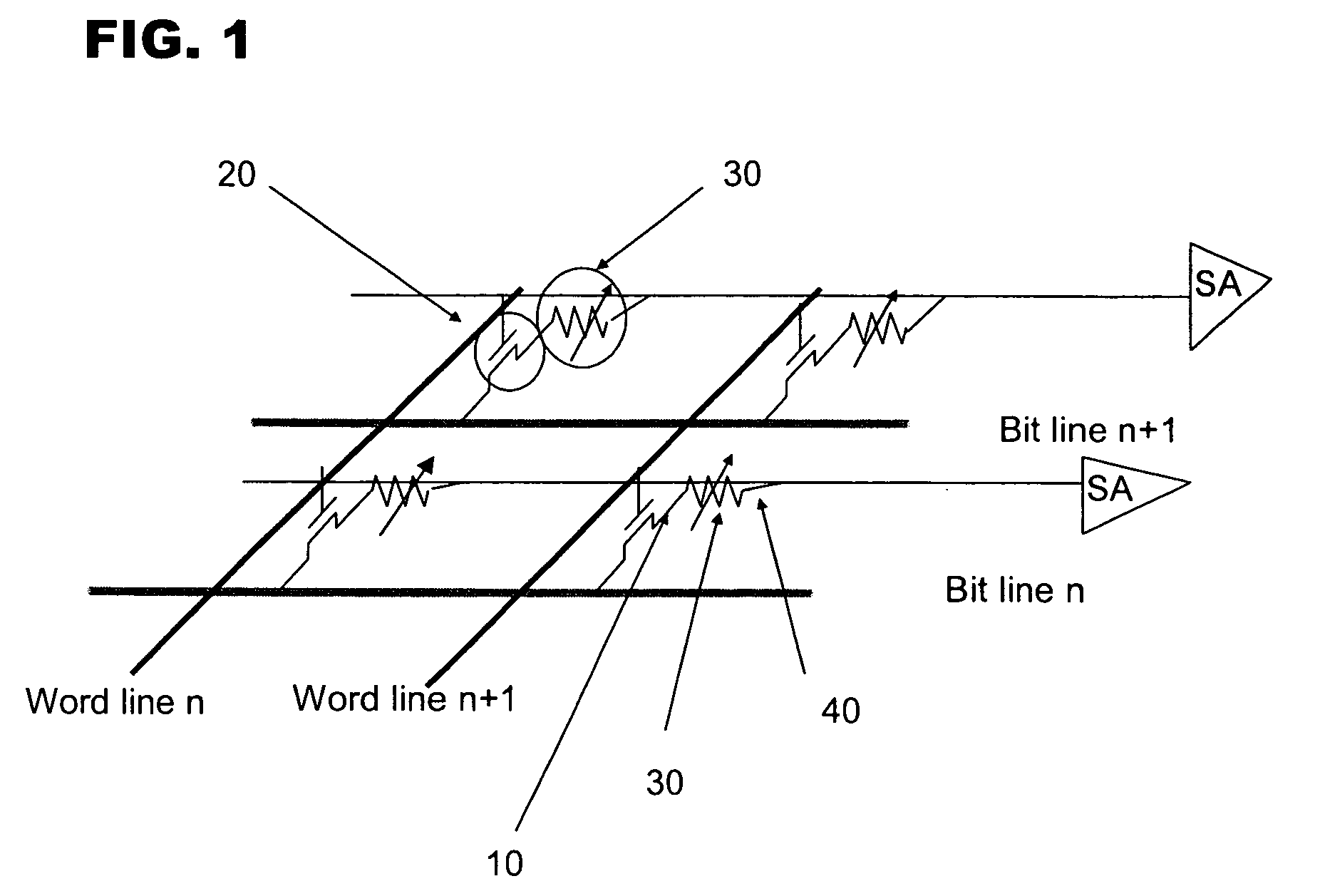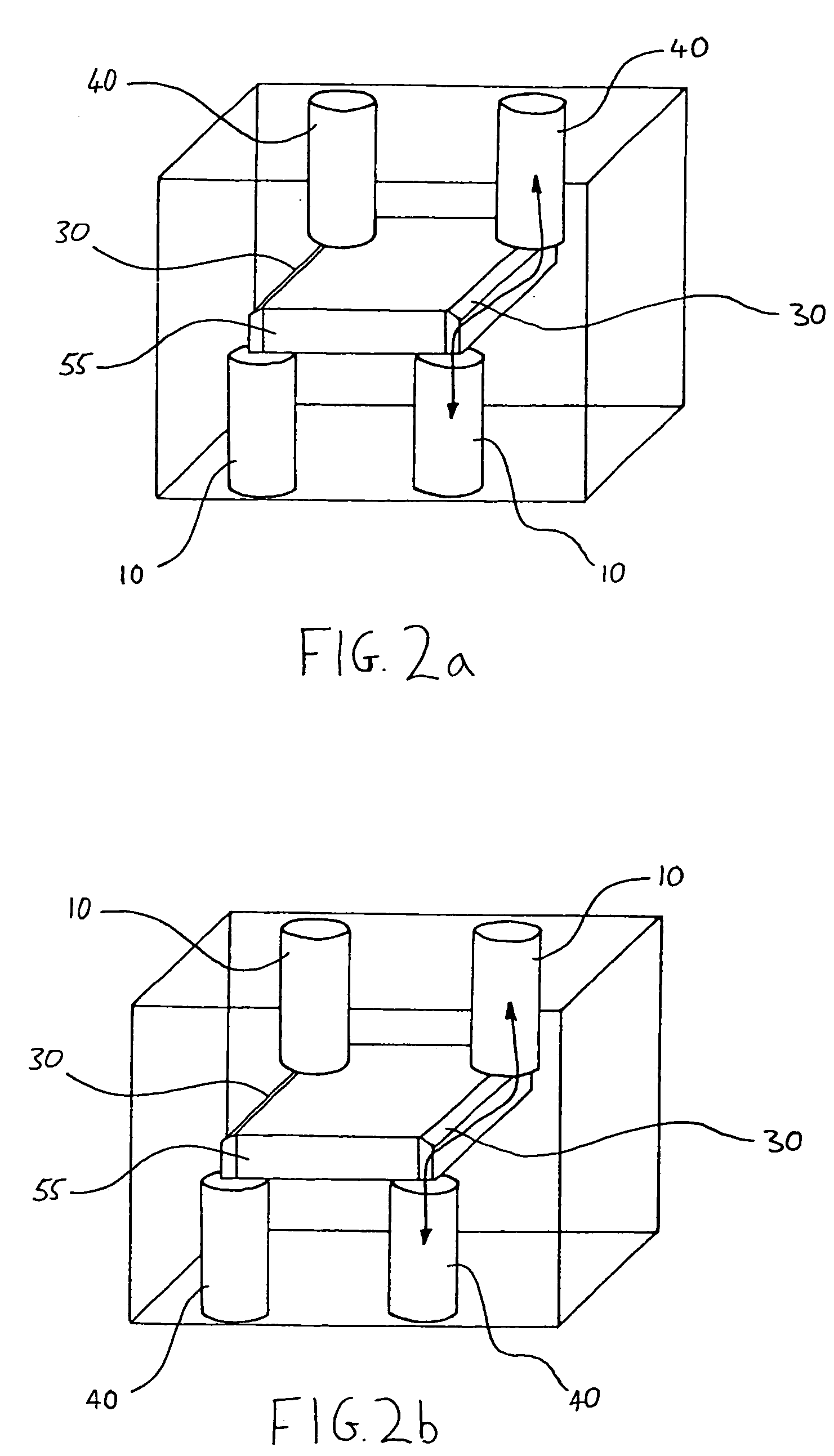Horizontal chalcogenide element defined by a pad for use in solid-state memories
a technology of chalcogenide elements and solid-state memories, which is applied in semiconductor devices, digital storage, instruments, etc., can solve the problems of reducing the current/power requirements of the resulting chalcogenide memory devices, and achieves the effects of effective depositing chalcogenide into ultra-small pores, good thickness control, and relative ease of fabrication
- Summary
- Abstract
- Description
- Claims
- Application Information
AI Technical Summary
Benefits of technology
Problems solved by technology
Method used
Image
Examples
Embodiment Construction
[0036] Two methods of fabricating elements are presented that provide element cross-sectional areas which may be smaller than that presently provided using conventional and some modified photolithographic methods. In particular, the illustrated embodiments disclosed herein exemplify methods in accordance with the present invention of fabricating elements that rely upon pads to define minimum heights of the elements and rely upon thicknesses of element comprising films (disposed over the pads) to define minimum widths of the elements. In either manner, phase change elements having minimum heights of about 20 Å and minimum widths of about 20 Å can be obtained.
[0037] Reference will now be made in detail to the presently preferred embodiments of the invention, examples of which are illustrated in the accompanying drawings. Wherever possible the same or similar reference numbers are used in the drawings and the description to refer to the same or like parts. It should be noted that the ...
PUM
 Login to View More
Login to View More Abstract
Description
Claims
Application Information
 Login to View More
Login to View More - R&D
- Intellectual Property
- Life Sciences
- Materials
- Tech Scout
- Unparalleled Data Quality
- Higher Quality Content
- 60% Fewer Hallucinations
Browse by: Latest US Patents, China's latest patents, Technical Efficacy Thesaurus, Application Domain, Technology Topic, Popular Technical Reports.
© 2025 PatSnap. All rights reserved.Legal|Privacy policy|Modern Slavery Act Transparency Statement|Sitemap|About US| Contact US: help@patsnap.com



